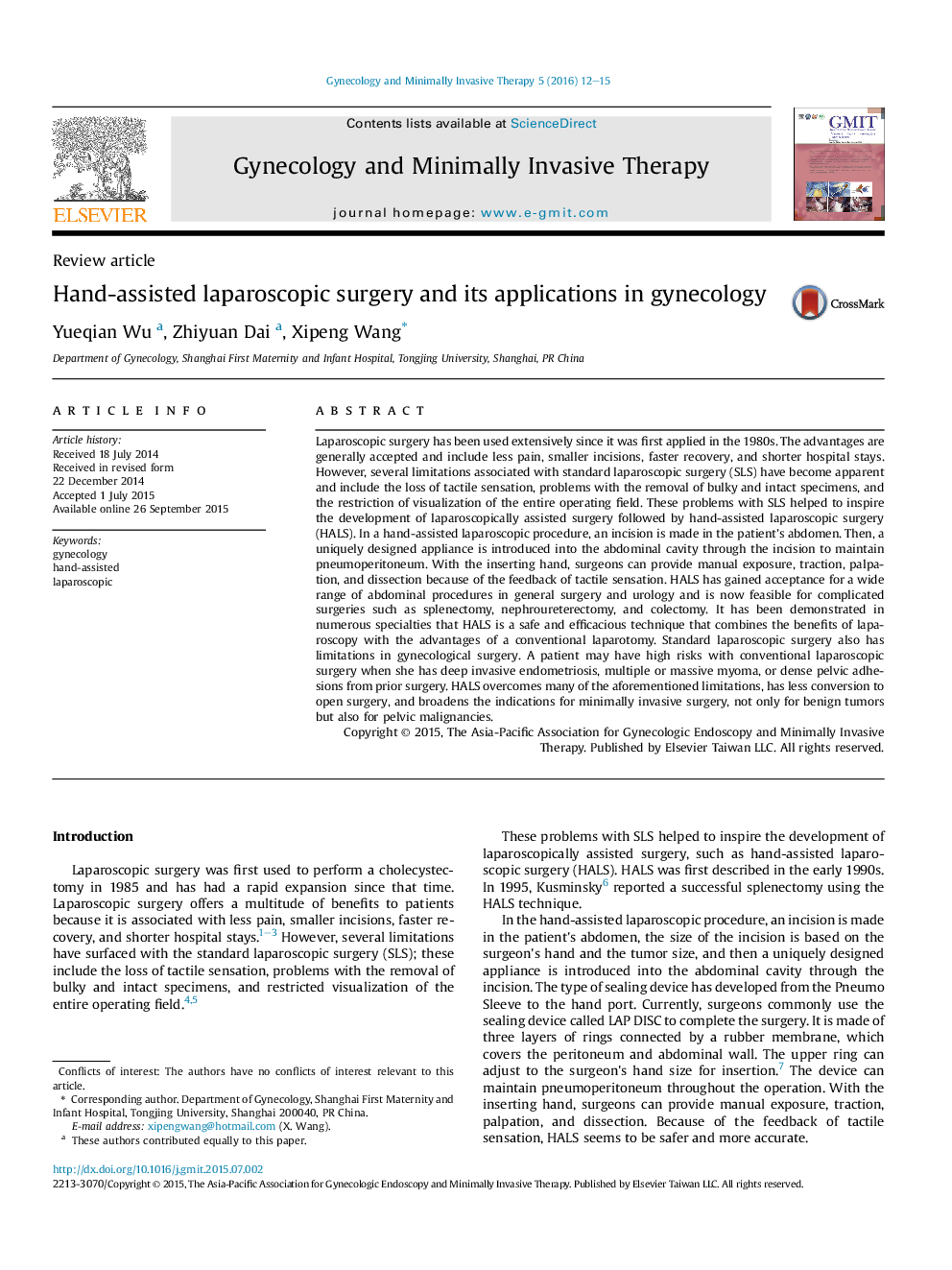| Article ID | Journal | Published Year | Pages | File Type |
|---|---|---|---|---|
| 3951929 | Gynecology and Minimally Invasive Therapy | 2016 | 4 Pages |
Laparoscopic surgery has been used extensively since it was first applied in the 1980s. The advantages are generally accepted and include less pain, smaller incisions, faster recovery, and shorter hospital stays. However, several limitations associated with standard laparoscopic surgery (SLS) have become apparent and include the loss of tactile sensation, problems with the removal of bulky and intact specimens, and the restriction of visualization of the entire operating field. These problems with SLS helped to inspire the development of laparoscopically assisted surgery followed by hand-assisted laparoscopic surgery (HALS). In a hand-assisted laparoscopic procedure, an incision is made in the patient’s abdomen. Then, a uniquely designed appliance is introduced into the abdominal cavity through the incision to maintain pneumoperitoneum. With the inserting hand, surgeons can provide manual exposure, traction, palpation, and dissection because of the feedback of tactile sensation. HALS has gained acceptance for a wide range of abdominal procedures in general surgery and urology and is now feasible for complicated surgeries such as splenectomy, nephroureterectomy, and colectomy. It has been demonstrated in numerous specialties that HALS is a safe and efficacious technique that combines the benefits of laparoscopy with the advantages of a conventional laparotomy. Standard laparoscopic surgery also has limitations in gynecological surgery. A patient may have high risks with conventional laparoscopic surgery when she has deep invasive endometriosis, multiple or massive myoma, or dense pelvic adhesions from prior surgery. HALS overcomes many of the aforementioned limitations, has less conversion to open surgery, and broadens the indications for minimally invasive surgery, not only for benign tumors but also for pelvic malignancies.
